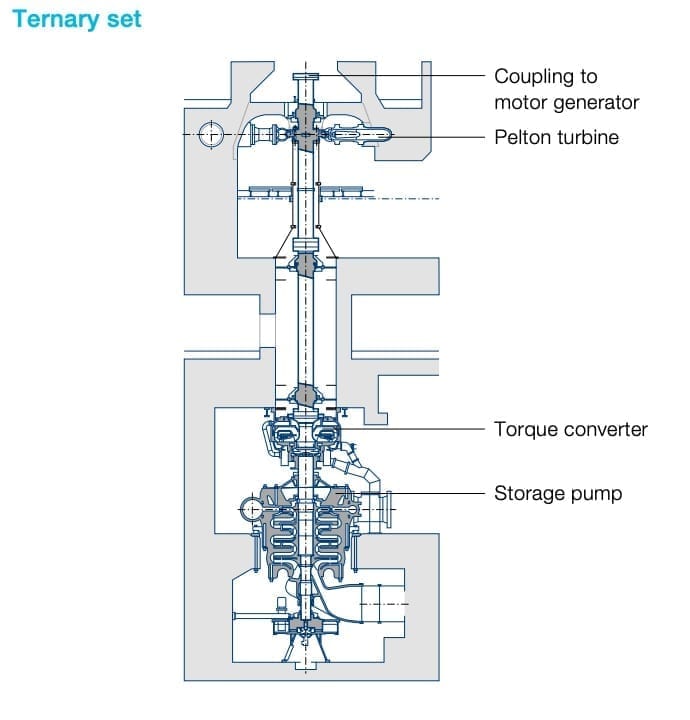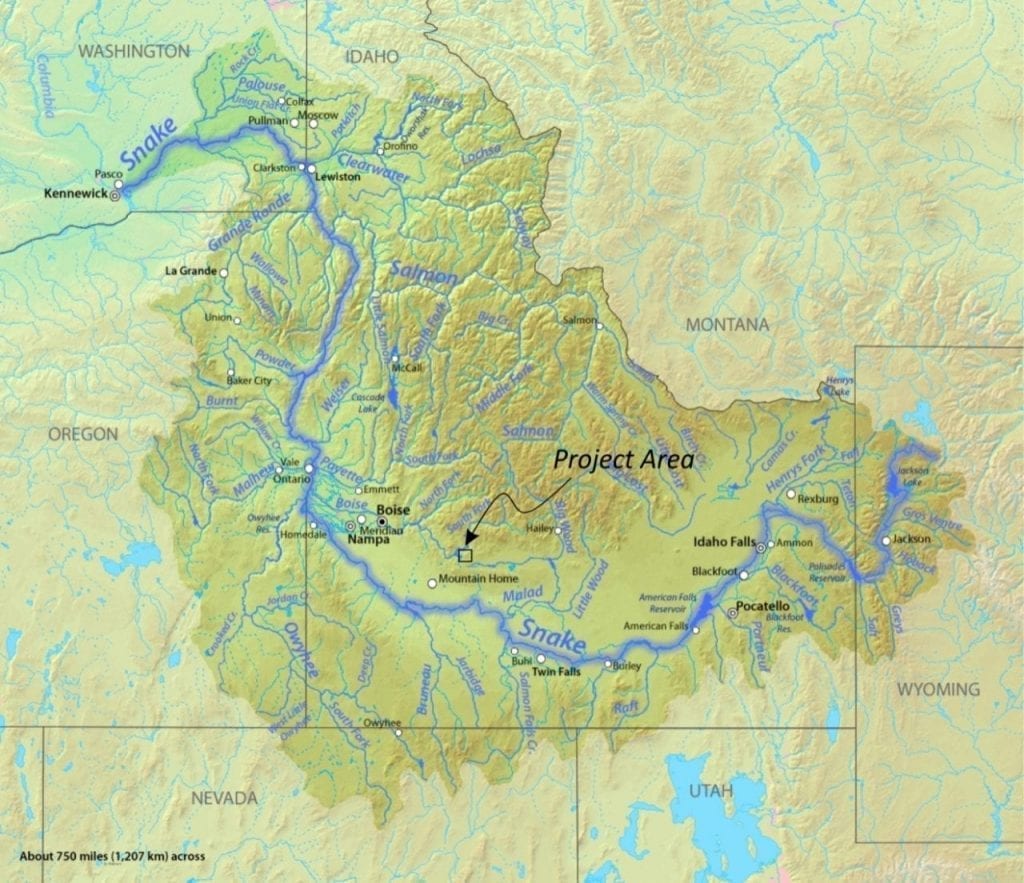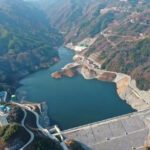Cat Creek Energy, developer of a 1.1-GW “tribrid” renewable power and water storage project planned near Mountain Home, Idaho, has picked Voith Hydro to design and manufacture equipment for the project’s 720-MW ternary pumped storage component.
The development announced on April 29 marks a major milestone for the Cat Creek Energy and Water (CCEW) project. As proposed, the project involves construction of a 100,000 acre-feet off-stream water storage facility on the South Fork of the Boise River to secure and meet multiple water needs across semi-arid southern Idaho and surrounding water-strapped regions. But it also plans to incorporate renewable power from onsite wind turbines and solar PV arrays with 720 MW of hydropower from a ternary pumped storage facility.
“The upper reservoir will store enough water to support more than 40% of the projected water supply needs of the Boise River Basin,” Voith and Cat Creek said in a joint statement on April 29. “This stored water volume will provide five complete days of full generation capacity (720 MW) from the pumped storage facility, creating one of the most significant Large Volume, Long Duration (LVLD) energy storage facilities in the West. The energy to power the pumps will come from on-site wind turbine and photovoltaic solar panel arrays as well as other variable renewable energy resources around the region.”
Ternary Sets for Fast Grid Response
Voith Hydro, a subsidiary of German technology giant Voith Group, said development of its ternary pumped storage equipment evolved from a long list of technological advancements stemming from its experience in hydraulics over many years. It notes that more than 450 Voith pumped storage units have been installed worldwide since 1908, when it installed an uphill water storage tank for turbine tests in Brunnenmühle, Germany, and used it to operate pumps and turbines.
As the company explained, most pumps for storage applications are mainly of the radial-flow type. “Depending on the application conditions, the construction can be a single-flow or double-flow, as well as single-staged and multi-staged,” it said. Ternary sets fall under its double-flow concepts. They essentially comprise a motor generator, a separate turbine (typically Francis or Pelton), and a pump set.
“As two separate hydraulic machines, the rotational direction of the motor generator can be the same in both operational modes. This results in considerable commercial value for the power plant’s operation. For switching between turbine and pump operation, the following components can be provided: a clutch operable at standstill, a starting turbine or a synchronizing tourque converter,” Voith Hydro said.
A prominent benefit these sets provide is flexibility, it said. With the configuration of a ternary set, the so-called hydraulic short circuit within the machine set can be implemented. “It offers the best answer for a very fast grid response, being carried out with the torque converter which allows fast change over between turbine and pump mode. Full regulating capability exists in both the turbine and the pump mode operation from 0% to 100% of the unit output,” it said.

A Regional Flexibility Boost
According to Cat Creek, the project’s multiple ternary turbines are designed to provide full ramping in less than 30 seconds, pumping and generating simultaneously, and storage of “varying intrahour intermittent loads,” as well as firm hourly power supply.
But because the large-volume, long-duration project positioned its interconnection to take advantage of major transmission systems in the area, it could provide forward capacity and ancillary services, as well as grid resiliency, resource capacity, and resource adequacy, Cat Creek said. CCEW plans to connect to the Idaho Power 230-kV system on multiple lines at the Rattlesnake Substation, as well the 500-kV PacifiCorp/Idaho Power existing line, and, when completed, the new Segment 9 Gateway West 500-kV line, documents show. “We have all studies complete for interconnection with the agreement in negotiations,” a spokesperson told POWER on Thursday.

John Faulkner, Cat Creek Energy’s owner, said that by selecting Voith Hydro ternary units, the company will “lock in the most capable technology for the pumped storage facility and confirm our intent to build this critical infrastructure project with American steel manufactured in America.” The CCEW project, he noted, “was uniquely conceived to address the needs for renewable energy and water storage with the best technologies available and with the highest degree of flexibility to adjust to future needs.”
Bringing the project to fruition may be a bigger challenge, given that it is facing opposition from at least one citizen group. However, Cat Creek says the project will provide regional economic benefits, especially during the construction period of the hydro portion of the project, which it anticipates will span 36 months.
For now, the company, which has so far developed the project for seven years, is optimistic. A spokesperson said Cat Creek is targeting an operation-start date within five years—by 2026. “The project has not moved forward in isolation as many agencies have been kept in the loop and consulted on the project,” she noted.
For Voith, the project may be a crowning achievement and a model for developers looking for technology options that could provide large-scale resilience. “This project will be the most advanced large-scale, fully integrated energy and water storage project ever constructed in the U.S. and we’re excited to be partnered with Cat Creek Energy right from the start,” said Stanley J. Kocon, president and CEO of Voith Hydro North America.
—Sonal Patel is a POWER senior associate editor (@sonalcpatel, @POWERmagazine).










